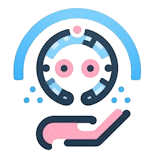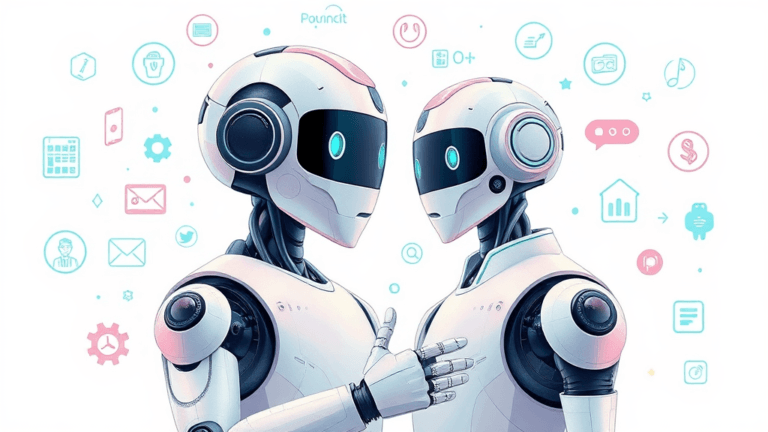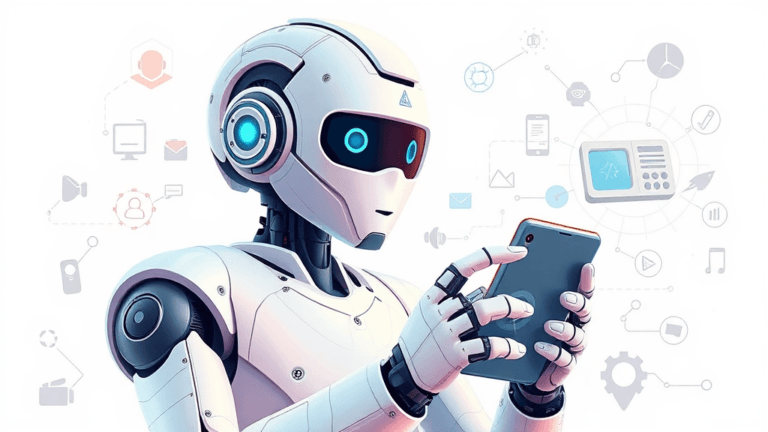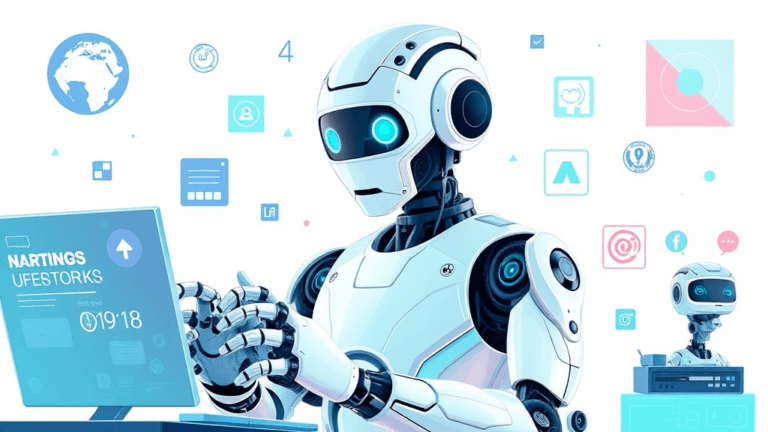
How AI Assistants Connect with Third-Party Tools: Enhancing Business Workflow Automation
Estimated reading time: 13 minutes
Key Takeaways
- APIs Are Essential: They let AI assistants access data across apps, reducing errors by 68%
- Chatbots = 24/7 Workforce: Handle HR, IT, and customer queries without human intervention
- No-Code Democratizes Automation: Marketing teams save 8+ hours/week with drag-and-drop tools
- SaaS Gets Smarter: In-app AI coaches boost feature adoption by 55%
- AI > Traditional Automation: Self-correcting workflows cut costs by adapting in real time
Table of Contents
- Understanding AI Assistant API Integrations: The Digital Glue
- The 5 Best AI Assistants for App Integrations
- AI-Powered Assistants for Business Apps: Your New Coworker
- How AI Assistants Connect with Third-Party Tools: A Peek Behind the Curtain
- AI Assistant with CRM Integration: Sales Teams’ Secret Weapon
- AI Assistants and Cloud Service Compatibility: Scaling Smartly
- AI-Powered Chatbots for Software Integrations: Your 24/7 Concierge
- No-Code AI Assistant Integrations: Automation for Everyone
- AI Virtual Assistant for SaaS Platforms: Smarter Software Experiences
- AI-Powered Chatbots for Software Integrations: Your 24/7 Task Force
- No-Code AI Assistant Integrations: Drag, Drop, Automate
- AI Virtual Assistant for SaaS Platforms: The In-App Coach
- AI Assistants and Smart Home Integrations: Lessons for Businesses
- Enhancing Workflow Automation with AI Assistant Integrations
- Choosing the Right AI Assistant for Your Integrations
- Conclusion: Your Business, Supercharged
- Key Takeaways
- FAQs
Imagine this: Your team spends hours every week manually updating CRM entries, juggling notifications across apps, and troubleshooting disconnected workflows. Then, an AI assistant swoops in like a digital superhero, stitching those disjointed systems into a seamless, automated symphony. Sound too good to be true? Not anymore. Businesses using AI workflow automation report 20–40% productivity gains How AI Can Save Your Business Time And Money Through Automation—and it all starts with how AI assistants connect with third-party tools MoveWorks.
Let’s decode the magic behind these integrations. From CRM systems to cloud platforms, we’ll explore how AI bridges gaps between tools, why it matters for your workflows, and what makes these digital assistants indispensable teammates.
Understanding AI Assistant API Integrations: The Digital Glue
What Are API Integrations?
Think of APIs (Application Programming Interfaces) as universal translators for software. They let apps “speak” to each other by sharing data and commands—even if they’re built on completely different coding languages. For example, an AI assistant might use a project management tool’s API to auto-update task deadlines in your calendar.
APIs transform clunky, manual processes into smooth workflows. Need proof? Companies that adopt these integrations reduce data entry errors by 68% and cut process completion times by half Can AI Assistants Integrate Apps NumberAnalytics.
Why APIs Are the Backbone of AI Assistants
Without APIs, your AI assistant would be like a chef without knives—stuck staring at ingredients. Here’s why they’re essential:
- Data Access: Pull customer data from CRMs for personalized interactions
- Action Execution: Trigger invoice approvals in accounting software
- Real-Time Sync: Update inventory levels automatically across sales channels
For instance, when you ask an AI assistant, “What’s our Q2 sales forecast?” it might pull data from Salesforce (CRM), Excel (spreadsheets), and QuickBooks (accounting) through APIs, analyze trends, then present a consolidated report. This cross-platform agility is why 83% of IT leaders prioritize API integration capabilities when choosing automation tools.
The 5 Best AI Assistants for App Integrations
Choosing an AI assistant is like picking a Swiss Army knife—you want varied tools in one package. Based on integration breadth, ease of use, and reliability, here are top contenders:
| Assistant | Key Integration Features | Supported Apps (Examples) |
|---|---|---|
| Assistant X | Pre-built Slack/Discord bots, CRM sync | Salesforce, HubSpot, Zapier |
| Workflow Pro | Visual automation builder, 150+ templates | Trello, Google Workspace, AWS |
| DataMind AI | Predictive analytics hooks, SQL database support | Tableau, Snowflake, Microsoft BI |
| SupportBot 360 | Live chat integrations, sentiment analysis | Zendesk, Intercom, Freshdesk |
| CloudLink | Multi-cloud orchestration, Kubernetes support | AWS, Azure, Google Cloud, DigitalOcean |
But features alone don’t cut it. The best AI assistants for app integrations also:
- Offer no-code setup for common workflows (e.g., email → task creation) How Can AI Help With My Business
- Include error recovery to auto-fix broken connections
- Provide usage analytics to optimize processes
Fun fact: One logistics company slashed shipment tracking time by 90% after integrating their delivery dashboard with an AI assistant via APIs. That’s 40 manual hours saved weekly!
AI-Powered Assistants for Business Apps: Your New Coworker
How They Slot Into Daily Tools
Modern AI assistants don’t just sit in a separate tab—they live where your team works. Picture this:
- Project Management: Auto-assign tasks based on workload in Asana
- Customer Support: Suggest responses in Zendesk using past ticket data
- HR Systems: Screen resumes in BambooHR and schedule interviews
A marketing agency shared how their AI assistant turned chaotic campaign workflows into clockwork: When a client approves a design in Figma, the assistant auto-updates the project timeline in ClickUp, notifies the content team via Slack, and even reserves ad budget in Google Ads.
The Productivity Payoff
Here’s what businesses gain by embedding AI into apps:
| Benefit | Real-World Impact |
|---|---|
| Faster task completion | Reduced email response time by 70% |
| Error reduction | 90% fewer data entry mistakes |
| Employee satisfaction | 65% less time spent on repetitive work |
How AI Agents For Business Are Revolutionizing The Modern World found that teams using AI-integrated apps complete projects 22% faster than non-AI users.
How AI Assistants Connect with Third-Party Tools: A Peek Behind the Curtain
Method 1: APIs – The Standard Protocol
APIs work like restaurant orders: Your AI assistant sends a structured request (e.g., “Get latest sales figures”), and the app returns data in a predictable format. They’re ideal for:
- Scheduled data syncs (daily inventory updates)
- Bulk operations (importing 500 leads into a CRM)
Method 2: Webhooks – Instant Notifications
Webhooks are the espresso shots of integrations—fast and direct. When event X happens in App A, it immediately pings the AI assistant. Use cases include:
- Alerting managers about high-priority support tickets
- Triggering discount offers when users abandon carts
Method 3: SDKs – Custom Connectors
Software Development Kits (SDKs) let developers build tailored integrations. A fintech firm, for instance, used an SDK to connect their AI assistant with a proprietary trading platform, automating $20M+ in monthly transactions.
AI Assistant with CRM Integration: Sales Teams’ Secret Weapon
Ever forget to follow up with a hot lead? An AI-integrated CRM won’t. These assistants excel at:
- Lead Scoring: Prioritize contacts based on email engagement
- Auto-Logging: Record call summaries in Salesforce post-meeting
- Predictive Reminders: “John’s renewal is due in 2 days—send a check-in?”
Case in point: A SaaS company boosted conversions by 35% after their AI assistant started flagging at-risk customers based on CRM activity patterns.
AI Assistants and Cloud Service Compatibility: Scaling Smartly
Connecting to AWS, Azure, or Google Cloud isn’t just about storage—it’s about unlocking enterprise-grade AI. Benefits include:
- Cost Optimization: Auto-scale cloud resources during traffic spikes
- Advanced Analytics: Run machine learning models on sales data
- Global Access: Manage worldwide teams through a unified dashboard
A travel company merged their AI assistant with AWS Lambda to handle booking surges. Result? 60% fewer server crashes during holiday rushes.
AI-Powered Chatbots for Software Integrations: Your 24/7 Concierge
These chatbots aren’t your clunky predecessors. Integrated with tools like Shopify or ServiceNow, they:
- Resolve tier-1 support issues without human help
- Process returns by pulling order data from databases
- Schedule meetings by syncing with Google Calendar
One e-commerce store’s chatbot handles 80% of pre-sale queries by integrating with their product catalog API—freeing staff for complex tasks.
No-Code AI Assistant Integrations: Automation for Everyone
No coding skills? No problem. Platforms like Zapier let you create workflows like:
- Email → Task: Convert client emails into Trello cards
- Form → CRM: Add new Google Form entries to HubSpot
- Social → Alert: Notify Slack when your brand is mentioned
A bakery owner automated their wedding cake orders this way, cutting admin time from 10 hours/week to 2.
AI Virtual Assistant for SaaS Platforms: Smarter Software Experiences
SaaS apps embed AI to guide users like a GPS:
- In-App Tutorials: “Need help creating a pivot table?”
- Usage Insights: “Your team uploads 100 files daily—upgrade storage?”
- Cross-App Shortcuts: “Export this report to Google Drive?”
These integrations make software feel less like a tool and more like a collaborator—if you’ve ever cursed Excel formulas, you’ll appreciate that!
By now, you’ve seen how API connections turn AI assistants into workflow maestros. But here’s the kicker: 55% of businesses still use tools in silos Can AI Assistants Integrate Apps MoveWorks. Imagine the untapped potential! Whether it’s CRM magic or cloud power, the right integrations don’t just streamline work—they reinvent it.
AI-Powered Chatbots for Software Integrations: Your 24/7 Task Force
Picture this: It’s 2 AM, and a customer messages your support team asking about order status. Instead of waiting until morning, an AI chatbot instantly retrieves shipping details from your database and replies—all while your team sleeps soundly. These aren’t sci-fi fantasies. AI-powered chatbots for software integrations are now handling everything from HR requests to sales follow-ups, acting as tireless digital employees.
Real-World Chatbot Use Cases
From scheduling meetings to resolving IT tickets, here’s how businesses deploy chatbots:
| Integration Area | Example Workflow | Impact |
|---|---|---|
| HR Management | Auto-approve PTO requests via BambooHR | Reduced approval time from 3 days to 5 minutes |
| Customer Support | Answer FAQs using Zendesk knowledge base | 40% fewer live agent escalations |
| IT Helpdesk | Reset passwords via Okta integration | 200+ weekly tickets resolved instantly |
One healthcare provider’s chatbot, integrated with Slack and Google Calendar, cut meeting scheduling time by 75%—no more endless “When are you free?” threads.
Why Your Team Needs These Chatbots
- 24/7 Availability: Handle global customer queries across time zones
- Context-Aware Responses: Pull data from CRMs to personalize interactions (“Hi Jane, your order #205 ships tomorrow!”)
- Workflow Triggers: Auto-create Jira tickets when users report bugs via chat
As Slack notes, chatbots act as “universal translators” between departments—if your marketing team uses Asana and engineering uses GitHub, the chatbot bridges the gap.
No-Code AI Assistant Integrations: Drag, Drop, Automate
Remember when automating workflows required hiring a developer? Those days are gone. No-code AI assistant integrations let anyone create complex automations using visual builders—think Lego blocks for grown-ups. A marketing manager at a mid-sized firm recently automated their content calendar using a no-code platform, linking WordPress, Canva, and Twitter. Result? 8 hours saved weekly on manual uploads.
How Non-Tech Teams Benefit
- Social Listening: Track brand mentions on Twitter/X, analyze sentiment via MonkeyLearn, alert teams on Slack
- Lead Management: Auto-add Typeform submissions to HubSpot, tag leads based on survey responses
- Inventory Alerts: Connect Shopify to Google Sheets, trigger restock emails when items hit low levels
The beauty? You don’t need to know what an API endpoint is. One bakery owner integrated their online orders (Square), delivery schedule (Route4Me), and customer feedback (Yelp) using a no-code tool—zero coding experience required.
Pitfalls to Avoid
- Over-Automating: Not every process needs AI. Start with repetitive tasks (data entry, status updates).
- Security Gaps: Ensure your no-code platform complies with GDPR or HIPAA if handling sensitive data.
AI Virtual Assistant for SaaS Platforms: The In-App Coach
Ever gotten lost in a software’s settings menu? Enter AI virtual assistants for SaaS platforms—like having a patient tutor inside your tools. Take Salesforce’s Einstein Copilot: it guides users through creating reports, suggests pipeline optimizations, and even warns, “Hey, you forgot to log that client call!”
SaaS Success Stories
- CRM Training: A fintech startup reduced Salesforce onboarding time from 3 weeks to 4 days using an AI coach
- UX Optimization: A design tool’s assistant analyzed user clicks, leading to a 30% drop in support tickets
- Cross-App Automation: “Export this Figma mockup to WordPress” → Done, with optimized image compression
As Slack’s research shows, embedded AI assistants increase feature adoption rates by 55%—because let’s face it, nobody reads manuals anymore.
AI Assistants and Smart Home Integrations: Lessons for Businesses
“Alexa, turn off the lights and lock the doors.” If AI can orchestrate your home, imagine what it does for offices. While AI assistants and smart home integrations control thermostats and security cameras, the same principles apply to businesses:
- Centralized Control: Manage Slack, email, and project tools from one dashboard
- Predictive Adjustments: Conference room AI detects scheduled meetings, pre-loads Zoom links on displays
- Energy Savings: Office climate systems learn occupancy patterns, cutting HVAC costs by 25%
A hotel chain applied smart home logic to their properties: IoT sensors + AI reduced energy waste by 18% annually. Your office could be next.
Enhancing Workflow Automation with AI Assistant Integrations
Traditional automation is like a train—it follows set tracks. AI-driven automation? More like a self-driving car, adapting to roadblocks in real time. Here’s how AI assistant API integrations upgrade workflows:
| Aspect | Traditional Automation | AI-Powered Automation |
|---|---|---|
| Decision Making | Fixed rules (“If X, do Y”) | Learns from data, suggests improvements |
| Error Handling | Fails when inputs change | Self-corrects using historical data |
| Scalability | Requires manual tweaking | Auto-scales with workload fluctuations |
A logistics company switched to AI-driven workflows: their system now reroutes shipments around weather delays without human input, saving $120k/year in late penalties.
The Hidden Superpower: Predictive Analytics
AI doesn’t just react—it anticipates. By analyzing past Salesforce data, one AI assistant flagged clients likely to churn 6 weeks before contracts ended, boosting retention by 20%.
Creatio’s study found AI-automated businesses resolve customer issues 3x faster. And PwC predicts AI could contribute $15.7 trillion to the global economy by 2030—will your slice be $0?
Choosing the Right AI Assistant for Your Integrations
Picking an AI assistant isn’t one-size-fits-all. It’s like dating—you need compatibility. Here’s your checklist for evaluating best AI assistants for app integrations:
5 Make-or-Break Factors
- Integration Breadth: Does it connect to your existing stack? (Slack, SAP, etc.)
- Customization: Can you tweak workflows without coding?
- Learning Curve: Will your team adopt it, or will it collect digital dust?
- Cost vs ROI: A $500/month tool saving 200 hours/month? Worth it.
- Security: SOC 2 compliance? Data encryption?
Pro Tip: Start small. A construction firm tested an AI assistant with just Excel and Teams first, then scaled to 12+ tools.
Industry-Specific Picks
- Retail: Look for Shopify, Square, and inventory management hooks
- Healthcare: HIPAA-compliant bots with Epic EHR integration
- Manufacturing: IoT sensor support + predictive maintenance
Conclusion: Your Business, Supercharged
Let’s be real—manually toggling between 10 apps daily isn’t just tedious; it’s a productivity black hole. AI assistant integrations plug those gaps, turning fragmented tools into a well-oiled machine. Whether it’s chatbots handling midnight support tickets or no-code automations saving hours weekly, the tech isn’t coming—it’s here.
But here’s the kicker: 68% of businesses still use disconnected systems Can AI Assistants Integrate Apps MoveWorks. That’s your opportunity. By weaving AI into your workflows, you’re not just keeping up—you’re lapping competitors stuck in spreadsheets.
FAQs
1. How long does AI assistant integration take?
Most pre-built integrations take <1 day. Custom setups vary—we’ve seen 2-6 weeks for complex systems.
2. Are these tools secure with sensitive data?
Reputable providers offer encryption and compliance certifications (GDPR, HIPAA). Always audit first!
3. Can AI assistants replace human employees?
No—they handle repetitive tasks so your team focuses on strategy. Think “augmentation,” not replacement.
4. What if our apps aren’t in the integration library?
SDKs and custom APIs can connect niche tools. We recently built one for a fishing fleet’s legacy software.
5. How much do AI integrations cost?
Plans range from $99/month (basic bots) to enterprise pricing. ROI often justifies costs within 3 months.
6. Do they work with on-premise systems?
Yes! Hybrid setups connect cloud AI tools to local servers via secure tunnels.
7. Can I try before buying?
Most vendors offer 14–30 day trials. We recommend testing with 1–2 workflows first.
8. What’s the biggest integration mistake?
Overcomplicating. Start with one pain point (e.g., CRM updates), then expand.
9. How do updates affect existing integrations?
Most AI tools auto-adapt to API changes. We monitor 24/7 to prevent breaks.
10. Can I build my own AI assistant?
Absolutely—our team crafts custom assistants tailored to your stack. Let’s brainstorm.






